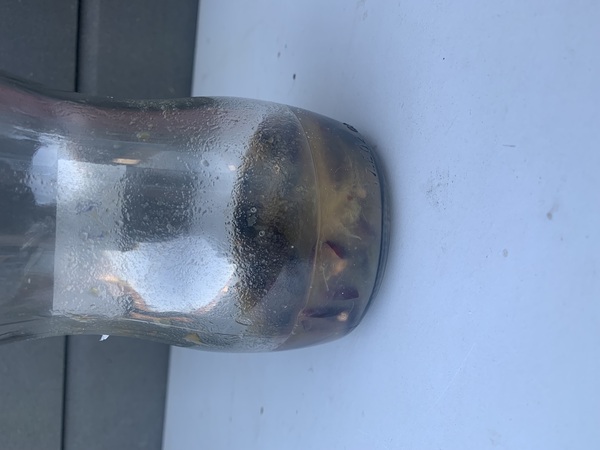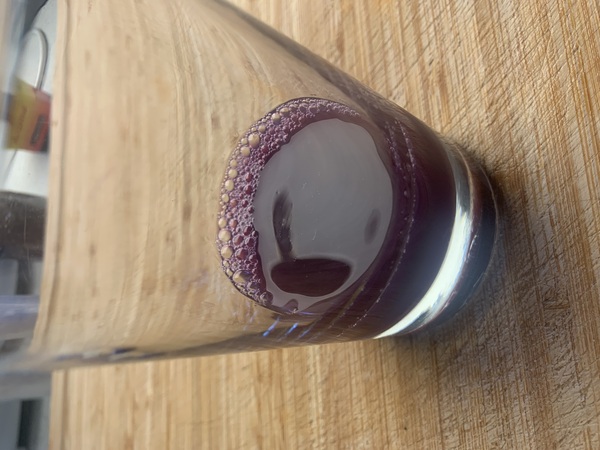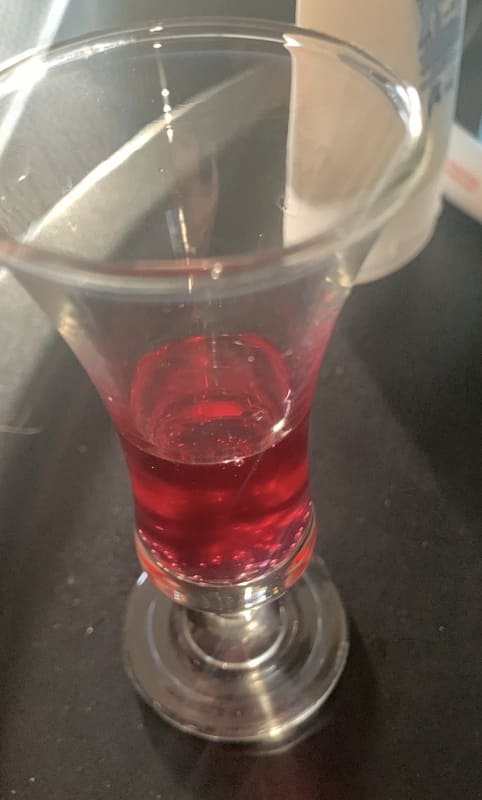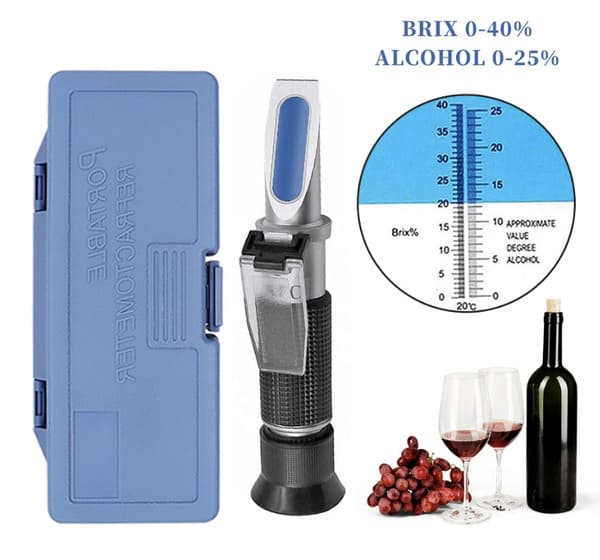
We make a Mash - thats what they call the pressed grapes. Only a little in a bowl must be enough to watch what happens. First, the grapes are removed from the small branches and washed in clean water to remove dust and possible small insects. Important! The bottles to be filled and also the cap must be sterilized in advance with hot water. From this point on, the following procedure is slightly different for wine and juice.

First test, we make juice from the pressed grapes. When we heat the grapes, the skin opens and the pulp comes out. We add some water and sugar to give the juice a good taste, but we try not to boil the pulp to avoid the escape of all possible components. Now we let the pulp passing through a fine-mesh sieve to remove particles. The result is seen below. Children will love the taste.

Just a note to clarify things. Since a license is required to produce alcohol in Thailand, we will stick with delicious juice from our grapes.
Second test, we make wine from the pressed grapes. When we heat up the grapes, the skin opens and the pulp comes out. This pulp is placed in an open bowl to start alcoholic fermentation. With a bit of luck, fermentation will start by itself. If it bubbles in the fermentation vessel, it indicates that the future wine is fermenting. The sugar contained in the grape is now converted into alcohol and carbon dioxide. More sugar means more alcohol. We leave the still somewhat unsightly pulp alone for three to four days and observe its development. The pulp then passes through a fine-mesh sieve and then goes through a cloth to remove the last fine particles. The result can be seen in the photo and the video below. At this point we realized us a refractometer is a necessary tool to control alcohol, unfortunately we did not have it but the taste is a big #woouw!

The wine is still bubbling a little, as we can see in the video. We need to find out why this happens after being bottled. Btw we put a little fermentation yeast in the pulp to give the wine-making process a helping hand, this maybe the reason for the long lasting bubbling.
We were unable to measure the alcohol content for our preliminary tests. After the tests we ordered a handheld alcohol - sugar refractometer for wine analysis from AlịExpress online shopping for a sensational price of 380 Thai Baht, shipping included.

picture is curtessy of AliExpress
Some specifications of the alcohol sugar refractometer, measurement range: Brix range: 0-40%, alcohol range: 0-25%, measurement accuracy: 1%, minimum Brix division: 1%, brand: JuanJuan. Accurate measurement depends on careful calibration. Since we have no intention of being a professional winemaker, these specifications seem fine for our hobby wine-making.
What does the °Bx symbol mean? - Degree Brix is a measure of the dissolved solids in a liquid, in our case it measures the dissolved sugar content in the wine.
What is 1°Bx? - 1°Bx is 1 gram of sugar (fructose in our case) in 100 grams of wine, the number represents the strength of the wine.
Is °Bx a common measurement? - Yes, °Bx is traditionally used in relation to wine, sugar, carbonated beverage and fruit juice.
What is Oechslegrad? - Oechslegrad (say °Oechsle) refers to the sugar content in unfermented grape juice. It can also be used to calculate the alcohol of the future wine.
Thailand pictures and videos can be used and shared with others if the originated page is credited. For credit use this link: ThaiHome.pics Thank you! | Q&A
Content last change: June 22 2024